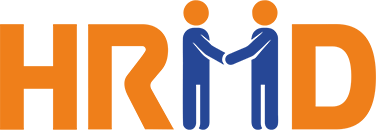Every organization is bound to follow the government regulations and adhere to the legal framework set up by them. They need this to manage their workforce and business operations and this is generally carried out by the HR department. Such things are called as statutory compliances. Organizations need to follow them and meet compliance needs if they need to comply with the government.
For the HR department, keeping the data within the organization error-free is one of the ways to stay compliant and this can be achieved by using a payroll software.
Here the different components of the statutory compliance are listed below. Moreover, we will also see the role of payroll software in keeping the processes clean and error-free. They are:
EPF – Employees’ Provident Fund
EPF or Employees’ Provident Fund is a scheme run by government for working professionals to accumulate retirement benefits. Under the scheme, an equal contribution of 12% based on the gross salary of the employee is made by the employee and employer. The amount is then deposited in the EPF account of the employee. An effective Payroll software will manage PF calculations for the employees in timely manner and automatically generate challans for ECR filing. Moreover, PF returns can be filed later by collecting the employee details in bulk.
PT – Professional Taxes
Professional Tax is levied and collected by governments of Indian states. It is only applicable in certain states and gets deducted from the employee’s salary directly. A payroll software evaluates and calculates it based on the PT laws followed in states. HR can have challans generated for taxes in the government recommended format with ease using such software.
TDS – Tax Deductions At Source
TDS was introduced with the aim to collect tax from income source. Here the tax is deducted from the salary of the employee by the employer and collected into the account of the Central Government. The final TDS is calculated by the employer after taking into considerations all the investments and loss of income sources of the employee based on the income. Using a payroll software the TDS will be automatically calculated for the employees based on their income slabs and will be deposited to the government account. It will also help in filing TDS return regularly.
LWF – Labour Welfare Fund
LWF is a statutory contribution that is taken care of by state authorities. It is the sum used to help needy people. The money is used to improve workplace conditions, improve standard of living and provide social security.
ESI – Employees’ State Insurance
ESIC manages the Employee State Insurance. ESIC or Employee State Insurance Corporation is an autonomous body that has been formed under the Ministry of Labour and Employment by the law. It was started for Indian workers as a self-financed health insurance. Here, again, employees and employers make a small contribution on behalf of the employee to the government. A good payroll software helps the organization to calculate and generate ESI challan reports with ease.
Other statutory Acts and Reports
A payroll software will help the organization to easily access compliance reports and forms under different Act related to the employees working in an organization.
The deductions mentioned above can be made from the salary of employees and deposited into the respective government department agencies. Challans are used to pay the dues and reports are filed accordingly back to the government.
Conclusion
Here we have seen the list of statutory compliances that an organization needs to follow to stay in the good books of the government and to manage employees effectively. By introducing a payroll software it becomes easy for the HR to take care of all such compliances while taking care of employees’ payroll.



